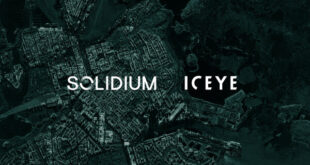
The Japanese New Space sector has never had it so good, though no one denies that there is much more to do. Investments are up, a robust ecosystem is emerging, and the Japanese government and large trading houses are now supportive of the sector: significant progress when compared to just a few years ago, according to a special report in the Financial Times.
“Until a few years ago, the government hardly paid any attention to space start-ups…But it’s a strong tailwind for the industry to have government backing,” according to Yuya Nakamura, co-founder of one of the first Japanese New Space companies, Axelspace.
Back then Japanese New Space companies struggled to find funding and customers, and the government and traditional Japanese satellite manufacturers such as Mitsubishi Electric Corporation (MELCO) and NEC did not take the sector at all seriously.
As an indication of fundamentally changing attitudes, however, Japan’s Prime Minister, Shinzo Abe, recently announced the goal to double the size of the Japanese commercial space industry to U.S.$21 billion by the early 2030’s. Since then Japanese New Space ventures have attracted a great deal of attention, with commercial lunar exploration company iSpace (not to be confused with its Chinese New Space namesake) raising U.S.$90 million in investment funding in December 2017 being a leading example.
This surge of interest and funding, however, seems to be driven by a fear of Japan’s commercial space sector losing out to rival sectors in the United States and China, rather than by a need to meet demand in emerging vertiucal and horizontal space and satellite markets in Japan and abroad.
“The Japanese space industry is about 90 per cent dependent on demand created by the government. We have always had a sense of urgency for the past couple of decades that we need to capture overseas markets and create domestic commercial demands,” said Yosuke Asai, Director of the Space Industry Office at the Japanese Ministry of Economy, Trade, and Industry (METI).
This concern that Japan could lose precious market share to international rivals extends to Japan’s national space agency, the Japanese Aerospace Exploration Agency (JAXA), long regarded as an archetypal Japanese government bureaucracy that operated and moved at its own pace. More recently, however, JAXA is forging public-private partnerships with companies to kickstart space enterprises.
“A big challenge for us is how we can keep up with private sector speed and how a government agency like us can be flexible in supporting their initiatives,” said Hiroyuki Iwamoto, a director at JAXA responsible for business development.
Only the other week JAXA announced its partnership with Japanese company ANA Holdings to create the AVATAR-X virtual reality (VR) and robotic space application and exploration venture.
Japanese New Space entrepreneurs as well as government space officials believe that they can leverage intrinsic and systemic Japanese economic advantages in their favour as Japan’s long-standing manufacturing strength can provide competitive costs for components and turnkey systems.
“We can keep costs low because we do everything on our own from building the rocket engine and its electronic components to assembling and launching the rockets,” said Takahiro Inagawa, chief executive officer of Interstellar Technologies, a Japanese New Space launch company.
The surge in Japanese commercial space is not just limited to what most people might regard as traditional New Space startups. Large and established Japanese companies and trading houses are also expanding into the commercial space sector, with, for example, Canon Electronics and IHI Aerospace combing forces to create SpaceOne, a small satellite launch company that hopes to start launch operations in the early 2020’s.
“We believe we can be more competitive by joining forces across various industries. Otherwise, Japan could face a decline,” says Shinichiro Ota, president of Space One.
Yet despite this surge in interest and funding, and a sea-change in official attitudes towards New Space, there are concerns that Japanese New Space and other commercial space companies are failing to meet actual market needs in Japan and abroad for innovative technologies and game-changing satellite applications for a range of everyday needs.
“Engineers tend to think about things from the technology aspect, focusing on what kind of images can be captured by the satellites,” said Masashi Sato, a consultant at Nomura Research Institute. “They need to consider which industry needs what kind of data for what purposes.”





